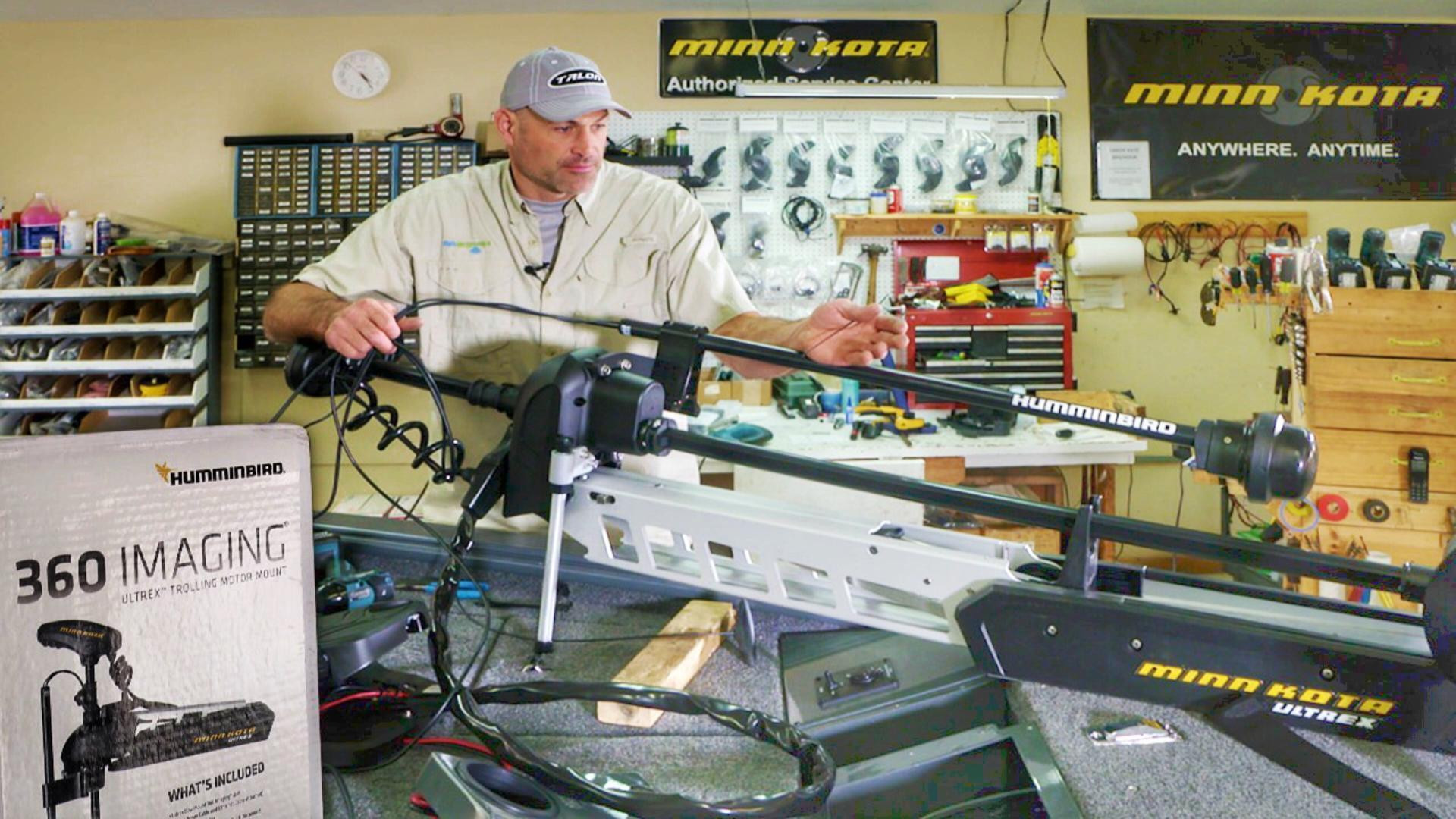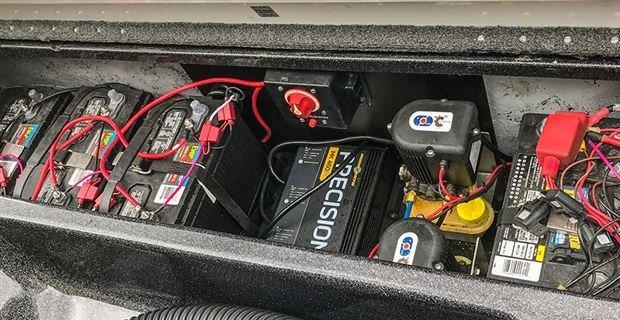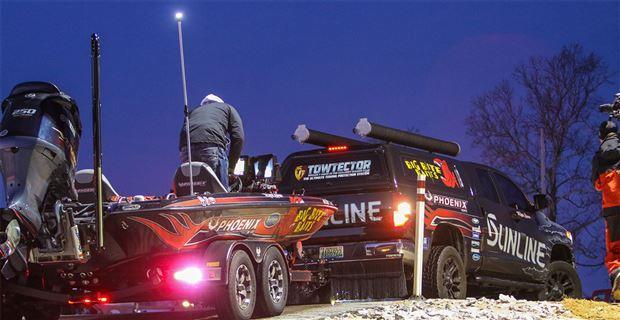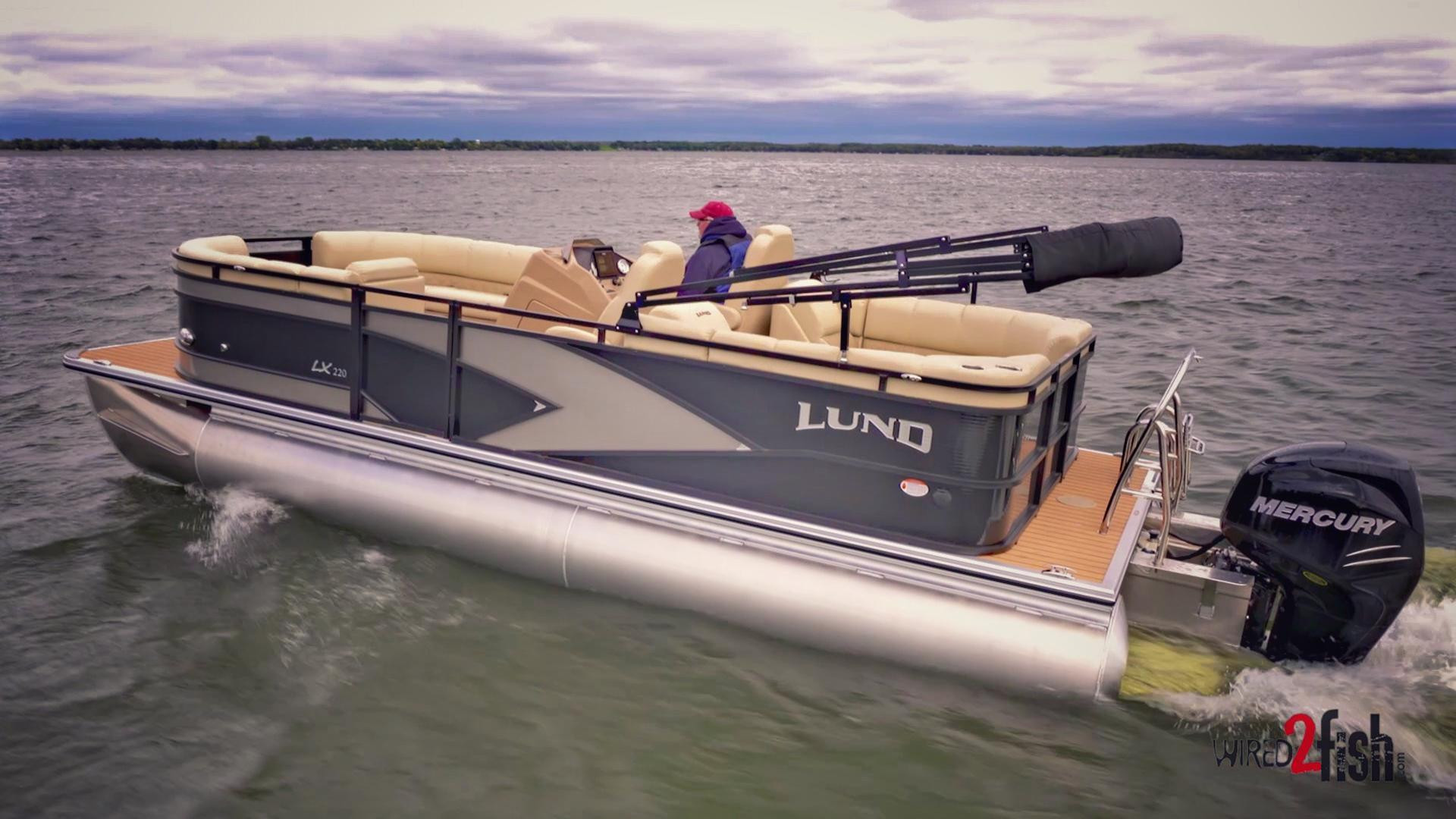Jumping the gun on a used bass boat purchase can be a precarious endeavor. It’s tempting to pull the trigger on the first good deal you run across, but if you’re not careful, it can quickly turn into thousands of dollars in repairs and very little time on the water. It’s hard to catch bass when your boat is constantly in the shop.
I’ve been there. I’ve been the guy who had to show up at 4:00am before a tournament just to make sure my old boat would crank. It’s not fun and I want to help you learn from my mistakes.
Wired2Fish president Terry Brown and I teamed up to make a quick checklist you can bring with you the next time you go boat shopping. TB is the man I turn to when I have any mechanical issues and his decades of experience make him an incredible resource on this subject.
Engine hours
Have a reputable dealer check the engine hours. Late models in particular can be checked with a computer and some earlier models (1990 and later) have a plug that allows a mechanic to check the hours.
Anything under 250 hours is considered to be fairly new. 500 to 750 hours can be considered moderate. Anything above 750 hours should be purchased with caution and only if the seller has a detailed annual maintenance log.
Compression test
Have a reputable dealer or mechanically inclined friend perform a routine compression test. You should be able to check the engine manufacturer’s manuals for suggested compression levels. If each cylinder is within 5 pounds, it’s usually manageable. But if you’re seeing a 10-pound difference, it can be a red flag.
Inconsisent compression readings can be indicative of serious problems such as bad cylinders, pistons or piston bearings.
Do you know the seller?
Knowing the previous owner is an enormous advantage because you’re likely to know how they treat their stuff. If they are a frequent river fisherman, their boats will often have more wear and tear than someone who fishes reservoirs.
Guide boats can actually be a good deal. They may have higher hours than other recreational boats, but most of these hours are often logged at low speeds due to client safety concerns.
Zinc anodes
If you see a lot of corrosion on a motor, hydrolysis is often the culprit. This can lead to severe electronic problems throughout the entire boat.
Typically, a boat will have two zinc anodes—one at the bottom of the engine mount and one right above the prop. These anodes need to be clean and intact. If they’re not, it can become a big problem down the road.
Prop and lower unit condition
The condition of a prop can tell you a lot about the general condition of a lower unit. If there are dings in the prop and gouges in the skeg, the seller has likely hit something. This can result in prop shaft damage or gear damage.
To check the prop shaft, raise the motor and manually turn the prop with your hand. If it wobbles at all, don’t buy the boat.
Make sure you don’t see any oil leaks. If the boat is in a garage or driveway, look at ground to see if there’s any oil residue. A few drips of exhaust residue isn’t the end of the world, but clear, yellow or green-colored leaks could be indicative of a bad seal.
Switches that don’t work
If the boat looks great, but three switches and half of the lights don’t work, it’s an indication of poor maintenance. If every switch works in a boat, the owner has almost always taken good care of it.
Check the navigation lights and all of your toggles (bilge, fill pump, etc.). These switches typically have a higher failure rate than others.
Crawl under the boat
Get underneath the boat and look for gouges, scratches or divets that may potentially cause a leak. Particularly on fiberglass bass boats, the hulls can delaminate at high speeds.
Every boat will have surface scratches, but deep scratches can be a deal breaker. Bring a flashlight with you because certain light angles and reflections can reveal any shotty repairs from previous owners.
While you’re under there…
Check for any signs of trailer rust or broken springs. Look inside of the tires and wheels for grease, as this could indicate serious bearing issues. Check the bunks for tightness and carpet condition. There should be no screws or bolts protruding from these bunks because it will severely damage the hull of the boat.
Taillights
LED lights are preferred because they’re submersible. The standard 1156 bulbs that are found on most older trailers will burn out constantly when the trailer is underwater. Trailer wiring issues can be a major headache and to be honest, really irritating, so be sure to check each and every light and turn signal before any money changes hands.
Don’t worry about electronics
Marine electronics are quickly becoming like trailer tires: They warrant replacement every so often. Electronics are getting better each and every year, so they should be the least of your worries. Ideally, you want a boat that has good bones. The accessories can always be changed or upgraded.
Seat condition
The condition of boat’s seats is a great indicator of the seller’s philosophy on boat care. If the seats are ripped and color faded, the boat has likely been stored outside in the elements, which can lead to many problems over time.
Look for tears and wear spots. If the seats are in excellent condition, the boat has likely been stored indoors, which is a major selling point in the used boat market.
Carpet fade and fit
Replacing boat carpet is a big DIY project. It may seem straightforward, but there is a lot of work that goes into it. The carpet is pricey and the process itself takes a considerable amount of time, especially for those with full-time jobs.
No such thing as a killer deal
If someone is trying to sell you a 2016 boat for $10,000, rest assured that there’s something wrong with it. They want to wash their hands of some sort of major problem.
In the large majority of situations, you’re simply not going to buy a boat for several thousand dollars under retail value. Carefully research the boat’s value on NADA or call your insurance agent for more information on value. After all, even if you pay $5,000 for a boat valued at $20,000, you’re still going to get taxed on $20,000.
Hanging wires are a bad sign
If you see a bunch of unkept wires under the console, that means someone has been messing with it. Do you see any loose wire ends? Where are they supposed to be connected to? If the seller cannot answer the question, you may want to look elsewhere.
An improperly wired boat can be a long-term nightmare.
Turn engine to check steering
Not only are steering issues expensive to fix, but they’re also an enormous safety issue. Turn the steering wheel in both directions and make sure there are no catches or rough spots. Make sure everything is tight and secure.
Older cable-steer systems can be incredibly tough to turn at low speeds, so if it’s stiff on the trailer, it’s only going to get worse on the water with the added torque.
Maintenance logs
The best seller you can ever hope to find is one who has kept extremely detailed maintenance logs throughout the boat’s life. What type of oil was used? When was the maintenance completed? How many times per year was the maintenance performed?
Motors with higher hours can actually be worth more money if they come with detailed logs of proper maintenance.
As a general rule of thumb, here are the things you need to ask about:
- Lower unit oil – Has it been changed twice per year?
- Impeller – Has it been changed once per year?
- Four-stroke oil – Has it been changed once per year?
- Spark plugs – Have they been changed once per year?
Open all compartments
Open every compartment to check carefully for mildew. Any mold or mildew is indicative of a leak that could potentially ruin your fishing gear. If it smells like dead animals, there could be a rodent (once) living somewhere in the boat, in which case the wiring has likely been chewed. This could mean big problems.
Make sure all gauges work
Your tachometer and water pressure gauges are the most important ones to check. If they don’t work, you’ll have a great bargaining point. You can replace these gauges, but it can be nearly impossible to find specific gauges for older-model boats.
The speedometer is the least of your worries due to modern electronics. Most fish finders will tell you how fast you’re going.
Tachometer and water pressure gauges are important because you’ll be able to know if your engine is running properly at idle. This can alert you to small problems before they become large, expensive problems.
Trim and motor mounts
Make sure the motor moves up and down smoothly and quickly. The console, bow and motor switches should all work.
Check the engine mount for cracks. This is the part of the engine that attaches to the transom or jack plate. It’s usually made from cast aluminum and if the previous owner hit something hard, they can certainly break.
Check corners of transom for stress cracks
This can be a major deal breaker.
The corners of the transom, especially on fiberglass boats, are often the weak spots on a boat’s hull. If there is any damage, you’ll usually find it where the internal gussets sit. There are usually three or four gussets in the back of the boat.
Stress cracks mean that the transom has a high probability of giving out. You can have a broken transom repaired, but it’s incredibly expensive and can even cost more than the value of the hull itself.
















